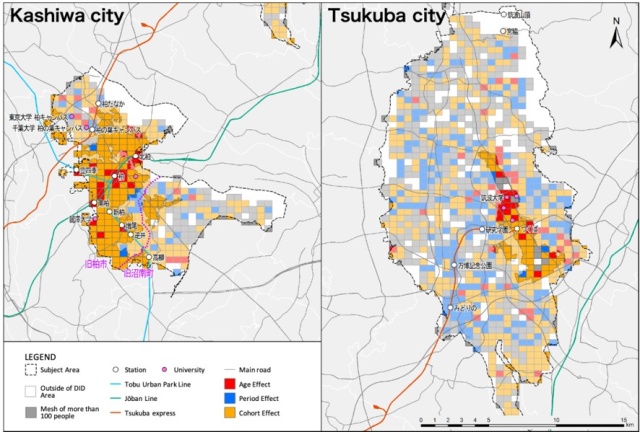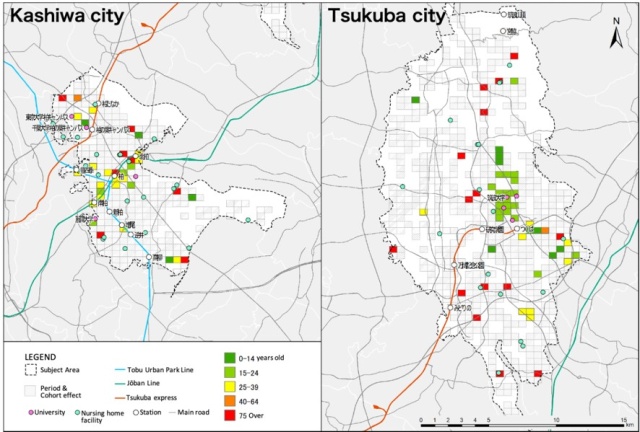Information of Paper
Author:Kyoungmin Kim, Keisuke Matsuhashi, Masahiro Ishikawa, Toshinori Ariga
Year:2020
Journal:Journal of the City Planning Institute of Japan, Volume 55, Issue 3, Pages 1121-1127
Link to the paper (Japanese only)
Keywords
Factors of population change, Bayesian age-period-cohort analysis, Age effect, Period effect, Cohort
Abstract
This study analyzed which factors mainly affect population change by using the Bayesian APC (Age-Period-Cohort) model(*1), which classifies each mesh population change into three factors—age, period, and cohort—based on changes in national population composition from 2000 to 2015. According to the analysis of the mesh of more than 100 inhabitants approximately 21% in Kashiwa City and approximately 41% in Tsukuba City, the “age effect” and “period effect” have more impact on population change than “cohort effect” (Figure 1).
*1) In classical APC analysis, there is a linear identification problem of a perfect relationship (Period = Age + Cohort) between age, period and cohort. With the development of analytical methods, Bayesian APC analysis has enabled to separate the effects of factors and assess them relatively.

By assessing the range of the age effect, it is possible to determine which age group from the population composition ratio of the mesh is larger compared with the national trend (Figure 2). This analysis could be utilized in the planning and improvement of facilities which support current and future life environment of the citizens.





